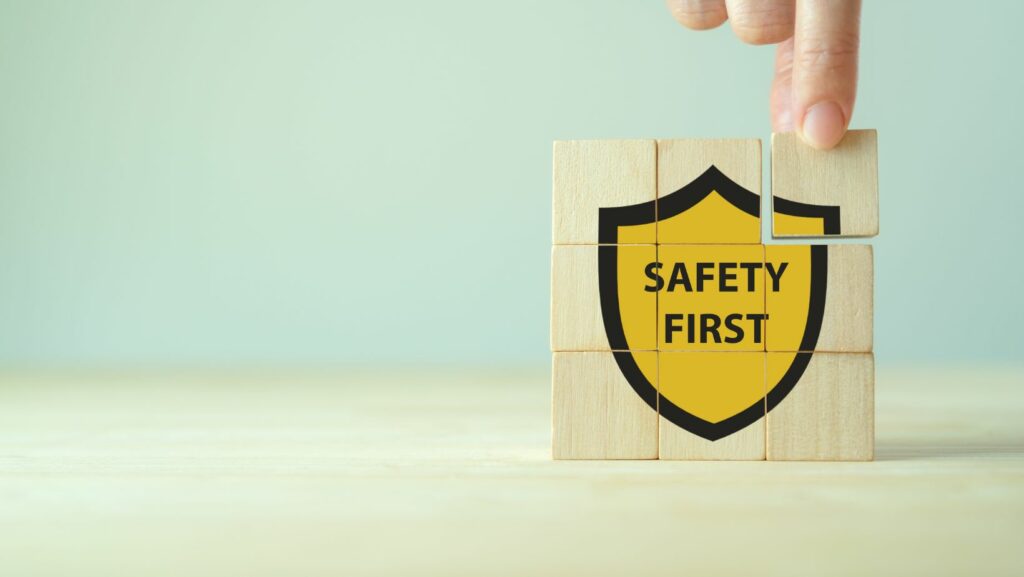In a world filled with potential hazards, understanding physical safety guidelines is crucial for everyone. Common sense safety practices help individuals navigate daily activities while minimizing risks. Whether at home, work, or in public spaces, being aware of these guidelines can prevent accidents and injuries.
Many people might think they already know the basics, but some safety principles are often overlooked. This article explores common sense physical safety guidelines that everyone should follow. By highlighting these essential tips, readers can enhance their awareness and promote a safer environment for themselves and others.
Which of the Following Are Common Sense Physical Safety Guidelines?
-
 Be Aware of Surroundings
Be Aware of Surroundings
Always maintain situational awareness. Recognizing potential hazards, such as uneven surfaces or obstructed pathways, prevents accidents. -
Use Safety Equipment
Utilize appropriate safety gear, including helmets, gloves, and protective eyewear. Such equipment minimizes injury risks in various environments. -
Follow Directions
Adhere to posted signs and warnings. These directives help ensure personal safety and guide behavior in potentially hazardous areas. -
Maintain Clear Walkways
Keep pathways unobstructed. Removing obstacles, such as cords or debris, reduces trip hazards and enhances safe navigation. -
Practice Fire Safety
Know the location of fire exits and extinguishers. Understanding evacuation routes enhances safety during emergencies. -
 Report Hazards
Report Hazards
Inform responsible individuals about potential dangers, like spills or broken equipment. Reporting promotes prompt corrective actions. -
Stay Alert While Using Equipment
Focus on the task at hand when operating machinery. Avoid distractions to decrease the likelihood of accidents. -
Secure Loose Items
Fasten objects properly to prevent them from falling. Securing loose items eliminates risks associated with falling debris. -
Utilize Proper Lifting Techniques
Bend at the knees and keep the load close to the body when lifting. Employing correct techniques minimizes the risk of strain or injury. -
Keep Emergency Contacts Handy
Maintain a list of emergency contacts and essential numbers. Quick access to information can facilitate timely responses in emergencies.
Importance of Physical Safety Guidelines
 Physical safety guidelines play a critical role in daily activities. They help individuals recognize and mitigate risks, ensuring personal safety and the safety of others. Understanding these guidelines fosters a culture of awareness, enhancing overall security in various environments.
Physical safety guidelines play a critical role in daily activities. They help individuals recognize and mitigate risks, ensuring personal safety and the safety of others. Understanding these guidelines fosters a culture of awareness, enhancing overall security in various environments.
Awareness of potential hazards improves response times to dangerous situations. By utilizing appropriate safety equipment, such as helmets and gloves, individuals significantly reduce injury risks. Following posted signs and warnings also guides safe behavior, reinforcing the understanding of surroundings.
Keeping walkways clear prevents trip hazards, a common cause of accidents. Practicing fire safety, including knowledge of evacuation routes, prepares individuals to respond effectively in emergencies. Reporting hazards to responsible parties ensures timely interventions, creating safer environments.
Staying alert when using equipment prevents accidents. Securing loose items inhibits falls and injuries. Employing proper lifting techniques protects against strains, while readily available emergency contacts facilitate quick responses when incidents occur.
Common Sense Safety Guidelines
Common sense safety guidelines serve as essential tools for minimizing risks across various environments. Implementing these practices promotes a culture of safety and awareness.
Home Safety Practices
-
 Secure Entrances: Install strong locks on doors and windows to deter unauthorized entry.
Secure Entrances: Install strong locks on doors and windows to deter unauthorized entry. -
Reduce Fire Hazards: Install smoke alarms and carbon monoxide detectors, testing them monthly to ensure functionality.
-
Store Hazardous Items Properly: Keep chemicals and sharp objects out of reach of children, ensuring all items have appropriate labels.
-
Create an Emergency Plan: Develop and practice a plan for evacuating the home in case of fire or natural disasters.
Evaluating Safety Guidelines
Embracing common sense physical safety guidelines is essential for fostering a secure environment. By integrating these practices into daily routines individuals not only protect themselves but also contribute to the safety of those around them. Awareness and proactive measures can significantly reduce risks and enhance overall well-being.
It’s crucial to stay informed about potential hazards and to use the right safety equipment. Regularly assessing one’s surroundings and adhering to safety protocols can make all the difference in preventing accidents. Ultimately, a commitment to safety creates a culture of vigilance that benefits everyone, ensuring a safer community for all.



